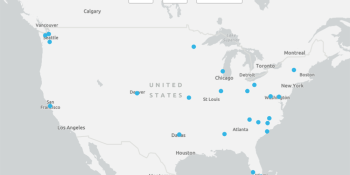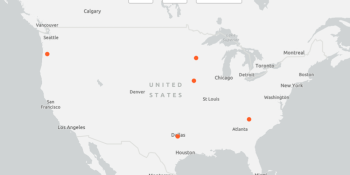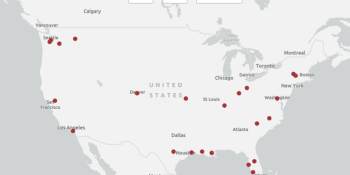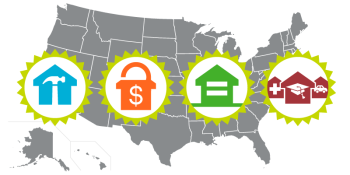Optimizing land use for affordable homes
Zoning restrictions and high land prices can make it prohibitively difficult to allocate land use for building or preserving affordable homes in opportunity-connected communities.
That’s why the Cost of Home campaign included optimizing land use for affordable homes as a key area of focus.
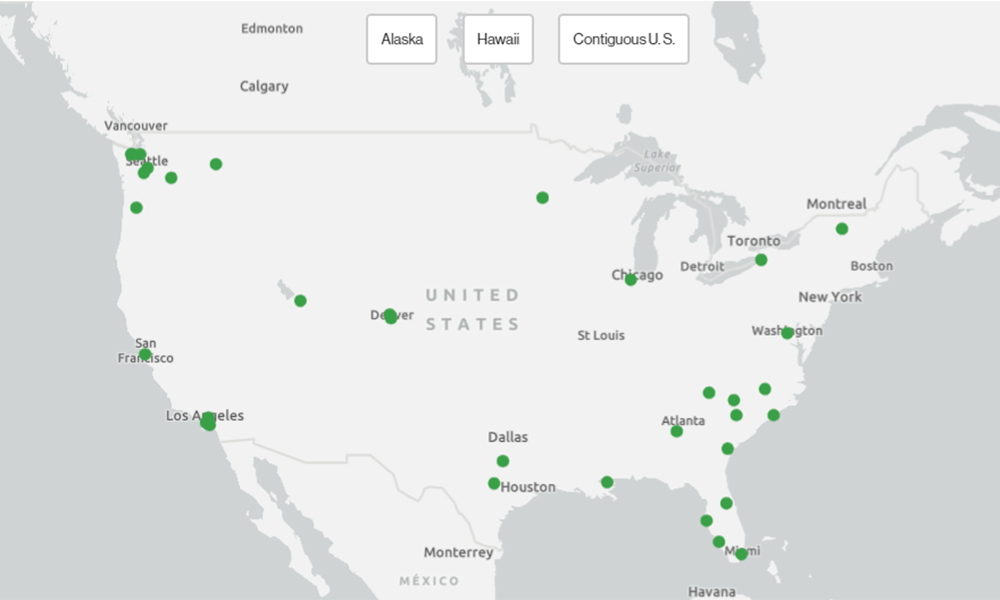
Check out our interactive map to see areas where local and state Habitat organizations have successfully changed housing policies to optimize land use for affordable homes.
To reduce barriers for the development and reservation of affordable housing, local and state Habitat organizations have successfully advocated for policies related to land acquisition, use and development.
Strategies used to create more equitable access to land:
- Reforms of zoning ordinances and design manuals to allow for a greater variety of housing types.
- Streamlining of discretionary land use approvals to reduce the time, risk and cost of building affordable homes.
- Establishment of mandates or incentives for the inclusion of affordable homes in new market-rate development.
- Increase in use of public land for affordable homes.
- Implementation of community land trusts and other shared-equity models to help land remain available for affordable homes over the long term.
- Creation of land banks that facilitate redevelopment of abandoned properties with affordable housing.
“The solutions involve recognizing that every person and every household has meaningful neighborhood preferences.”
How do restrictive zoning and high land prices limit development of affordable homes?
- In some towns and city neighborhoods, zoning ordinances ban small-lot homes, cottages or multi-family housing.
- In other communities, strict zoning limits and discretionary approval processes can drive up the time, risk and cost of building affordable homes to the point that their development is not viable.
- In redeveloping and strong-market neighborhoods, high land prices can pose an even bigger barrier to affordable homes, as intense competitions heat up land costs and makes viable development opportunities scarce.
In this video, see how Habitat’s advocacy work in diverse areas — Charlottesville, Virginia; Gaithersburg, Maryland; Los Angeles; Milwaukee; Seattle; Spokane, Washington — is reshaping land policies that lead to more affordable homes and more equitable opportunities for all residents.
Solutions for equitable land use reforms
Zoning reforms and other initiatives that bring new investment into communities run the risk of causing displacement, benefiting some while harming others — and those harmed are far too often communities of color. However, policymakers and advocates have a growing set of proactive policy tools for preventing this.
Habitat created a policy guide sharing 10 policy strategies for preventing displacement (PDF) to help ensure that public initiatives like zoning reforms deliver equitable outcomes for all, allowing existing residents to benefit and stay in their communities.
Additionally, Habitat’s report on making land use policy more racially equitable (PDF) illustrates how awareness can lead to zoning and other land use reforms that are more inclusive and fair for people of color.
Resources like these help inform the advocacy work of local and state Habitat organizations across the country to bring down the cost of building and stimulate the production and preservation of affordable housing, to promote fair housing, and to fully reflect community needs.
Our impact
Check out our solutions in action:
- Policy successes mapped by policy focus area and geographies.
- A typology or searchable database of policy changes achieved by Cost of Home.
- Urban Institute brief on searchable database.
- Strategies for advocates to influence home affordability policies.
- Urban Institute policy assessment report.
Join us
Though the Cost of Home campaign has concluded, the work continues. Learn how you can add your voice as Habitat advocates for policies related to land acquisition, use and development.
